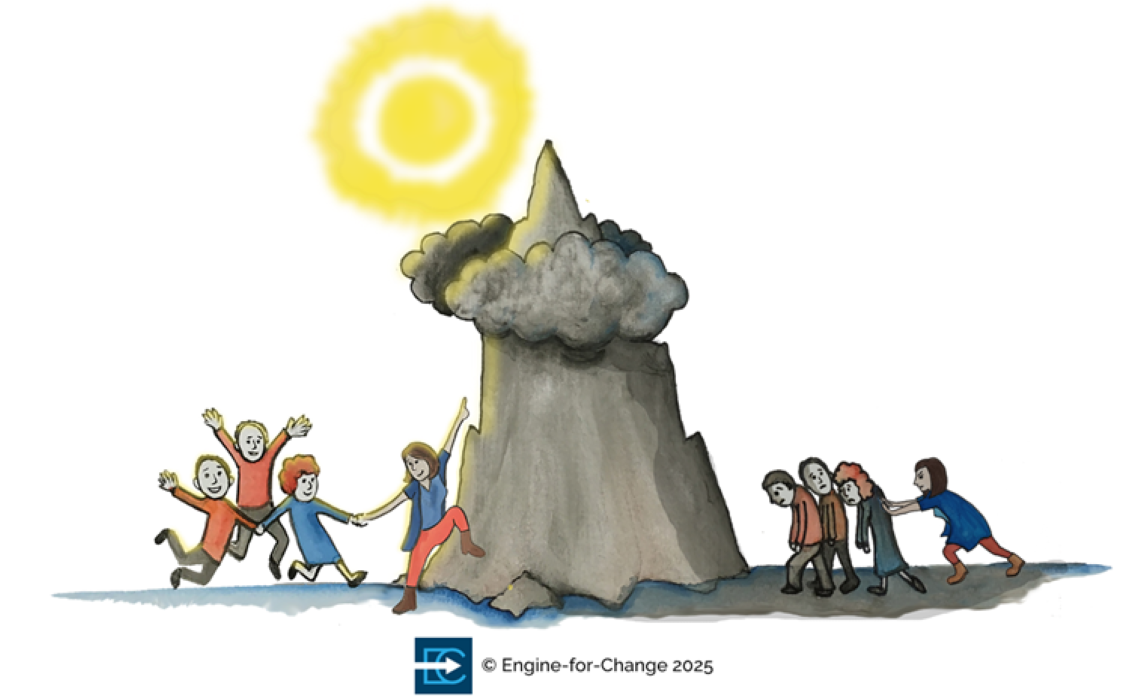In today’s economic climate, change managers face significant challenges when they try to deliver faster results with limited resources while demonstrating their strategic value to organizational leaders. Traditional change management models, while effective in some contexts, often fall short when budgets are tight and expectations are high. To address these challenges, a growing number of professionals are turning to an approach called Driving Change, which leverages the untapped potential of change agents within organizations.
Understanding Change Agents
The term “change agent” is often misunderstood. Unlike change ambassadors, who are individuals tasked with spreading leadership’s messages across teams, change agents are people who actively start and drive the changes they want to see. This mindset assumes that everyone in an organization has the potential to be a change agent, even if most people are unaware of it.
Traditional change management strategies often assume that employees are resistant or neutral to change, leading to tactics that rely on coercion or incentives to enforce compliance. This approach, referred to here as Driving People, involves forcing individuals to adopt new behaviors through rewards or consequences. However, Driving People can exhaust both change managers and employees, while also reducing the influence of the change manager, who may need to rely on senior leaders to enforce compliance.
In contrast, Driving Change focuses on empowering individuals to embrace change voluntarily. Change managers who adopt this approach prioritize a clear outcome, identify obstacles to achieving it, and work to remove those barriers. By clearing the path for others to join the change effort, they foster a culture of collaboration and initiative.
Driving Change vs. Driving People
To illustrate the difference between Driving People and Driving Change, consider two approaches to implementing a new financial tool aimed at speeding up the monthly book-closing process.
- Scenario A (Driving People): The change focuses on ensuring all finance analysts adopt the new tool to meet deadlines. Meetings focus on tracking compliance, with consequences for non-compliance. Communication emphasizes what employees must do, creating a high-pressure environment.
- Scenario B (Driving Change): The change emphasizes the goal of closing the books faster to allow employees more personal time, such as guilt-free weekends. Discussions focus on identifying and removing obstacles to using the new tool, celebrating incremental successes, and encouraging collaboration. The process feels energizing and inclusive.
While both scenarios address the same goal, the Driving Change approach creates a more positive, sustainable path by aligning tactics with employees’ intrinsic motivations.
Why Driving Change Works
Driving Change offers several advantages for change managers. First, it taps into an organization’s existing resources—its people—without requiring significant financial investment. By fostering change agents, managers can distribute the effort of change across teams, accelerating results. Second, it enhances the strategic visibility of change managers. When leaders see their teams energized and achieving outcomes, they are more likely to view the change manager as a vital contributor.
For example, a larger tech firm recently adopted Driving Change to roll out a new software code repository system. Instead of mandating adoption, the change manager worked with early adopters to identify and resolve usability issues, then shared these solutions across teams. Employees saw the system as a tool to simplify their work, and adoption rates increased dramatically and organically. The change manager’s role shifted from enforcer to facilitator, earning them greater trust from leadership.
Overcoming Barriers to Driving Change
Despite its benefits, adopting Driving Change can be challenging. Many change managers are unaware of this approach, as it is not taught in traditional change courses. Organizational habits often favor Driving People, especially in high-pressure environments where leaders want any quick action, even if it does not produce sustainable change. Change managers may also hesitate to stand out by adopting a new strategy, particularly when colleagues rely on familiar tactics.
To overcome these barriers, professional change managers can start by experimenting with Driving Change on a small scale. For instance, they might select one team, articulate a clear outcome, and focus on removing obstacles to adoption. Documenting successes, even minor ones, can build confidence and provide evidence to share with stakeholders.
A Path Forward for Change Managers
In an era of heightened expectations and constrained budgets, Driving Change offers a practical, effective strategy for change managers. By fostering change agents and focusing on removing obstacles, professional change managers can achieve faster results while strengthening their strategic role within their organizations. This approach does not require abandoning traditional change management skills, but enhances them with a collaborative, energizing mindset.
Change managers interested in exploring Driving Change can begin by reflecting on their current projects. What obstacles are preventing progress? How can they role model their commitment to the change and invite others to contribute to the change? By starting small and building on successes, they can create a ripple effect that transforms their approach to change—and their organizations.







